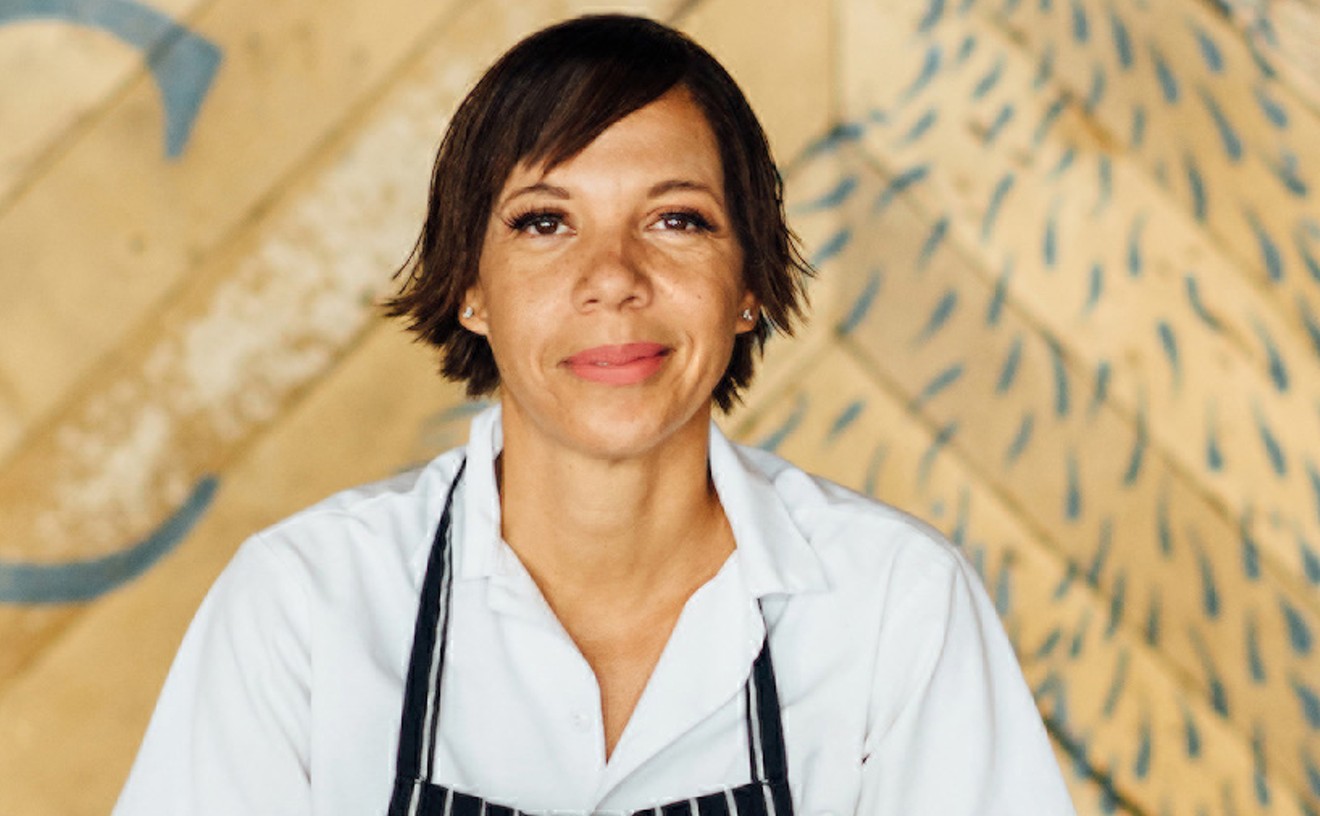Lazaro Cabrera pulls a Neoprene hood over his crop of loopy black hair and slips on extra-long diving fins. Then he plunges without air tanks more than 60 feet into the azure depths. About two minutes later, he surfaces with a 15-pound yellow jack impaled on a glinting spear.
He passes the fish to his driver, who tosses it into a 200-gallon cooler, and soon the 43-year-old spearfishing champion is back onboard. During the boat's half-hour slog back to shore, Cabrera munches on crackers and canned Vienna sausage, the humble lunch of choice for Cuban spearfishermen.
Despite the fact Florida is surrounded on three sides by ocean, getting local fish onto diners' plates is more complex than it seems.
tweet this
As he pulls up to the marina, Cabrera is on the phone discussing the day's catch — nearly two dozen spiny lobsters, a mess of mangrove snappers, and the yellow jack — with Trigger Seafood owner Jorge Figueroa. You may have heard of Figueroa. The stocky, gregarious 49-year-old is the man many of the city's top restaurants call to source their fish.
When the catch hits the poured-concrete dock, many long-held beliefs about Florida seafood begin to unravel. Although Florida is surrounded on three sides by ocean, getting local fish onto diners' plates is more complex than it seems. And the maxim "fresher is better" doesn't necessarily hold true.
"It's gotten tighter and tighter," says Figueroa. Over the past decade, regulators have shortened commercial fishing seasons to conserve stocks, banned sales by charter boat captains, and slashed the number of permits.
The total catch of many species has fallen significantly in recent years. More than 32,000 pounds of hogfish were caught off Florida in 2005, according to the Florida Fish and Wildlife Conservation Commission (FWC). Despite a bump in 2011 to more than 56,000 pounds, it seems fishermen this year will be lucky to top 20,000.
And an endless puzzle of paperwork and rules handed down by multiple agencies has decimated the network of local fishermen, Figueroa says. When he got his start in the early 2000s after a 20-year career as a radiologist, he bought a few hundred pounds from about 30 fishermen for a few sushi joints and big names like Michael's Genuine and the Mandarin Oriental. Today, he purchases from about a dozen reliables.
Indeed, many Florida purveyors carry fish imported from places like South America and the Mediterranean. More than 90 percent of the seafood consumed in the United States is imported, according to the National Oceanic and Atmospheric Administration.
But our yellow jack is the real thing. After hitting the deck, it's packed in ice and stashed in the catacomb of a walk-in freezer. Though we have to remove it for our story, it should stay there. A couple of hours after death, the muscles stiffen and remain that way for anywhere from one to four days. They loosen up as decomposition begins. "It's better to leave it for a while so it loses that rigor mortis," Figueroa says.
Figueroa hurries the process for us, even though it means it can't be served. And about eight hours after the yellow jack leaves the water, 27 Restaurant & Bar's Jimmy Lebron begins filleting it. The 31-year-old busboy turned chef struggles to free the fat loin from its skeleton. Had more time passed, the knife would have slipped through the flesh as if it were Jell-O. Once Lebron completes his task, sous chef Sasha Ullman, age 25, slices off thin feathers that will eventually become part of a crudo.
A restaurant that wants to serve local fish must adjust to whatever the sea yields. "In the U.S., we're too used to having whatever we want all the time," Ullman says. "If you want to work with local fish, you have to deal with what you can get."
So the kitchen at 27 serves an ever-changing menu that includes not just yellow jack but barrelfish, black grouper, and more.
Diners seem willing to pay the price for local ingredients. "I always try to support places that are farm-to-table," Filipa Rio, age 36, says while picking over her own crudo, "and I absolutely notice the difference." And diners seem ever more willing to pay for that difference.
Over the past decade, the average amount paid for red snapper, for example, has risen from $2.88 a pound to $3.96, while black grouper has steadily climbed from $2.63 a pound to $4.32, according to FWC data.
What matters most, however, isn't necessarily the species or what the kitchen wants to cook. Eventually, the yellow jack is transformed into a delicate veneer lining a flower-etched plate. The opaque meat is doused in a blend of lime juice, speckled with herb oil, and dotted with jackfruit and pineapple. The tart, fruity bites are the ideal accompaniment to both the cocktails and the thick, late summer air.
Yet the best part of it wasn't only that the yellow jack was pulled from the water that day. It was the herbs from 27's burgeoning garden and coins of nutty, unripe plantain. They helped brighten the fish's delicate flavor and were a reminder that this treat was available for only a short time and only in Miami.











